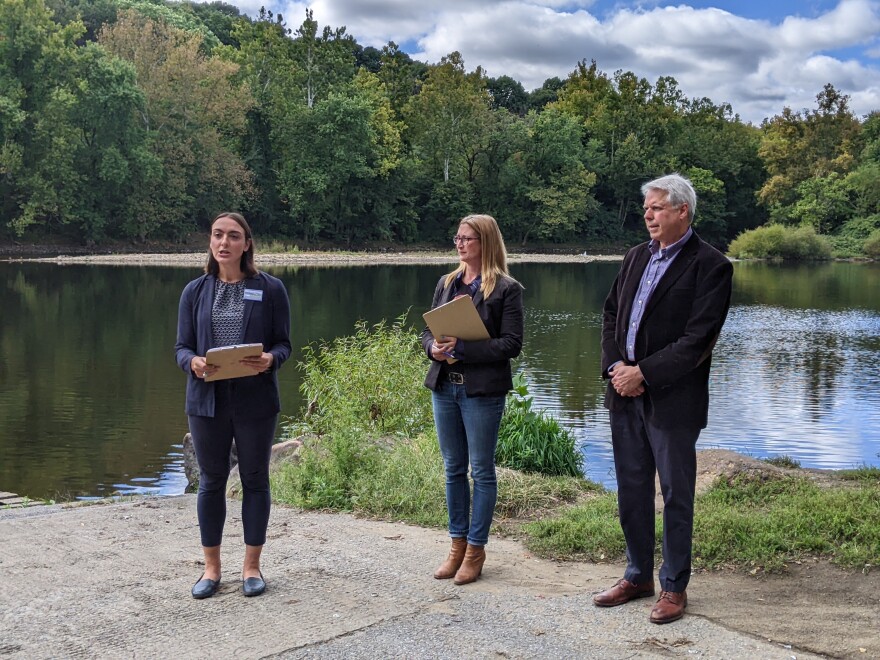ALLENTOWN, Pa. - A new report using EPA data shows the Lehigh River watershed has among the highest amounts of pollution linked to reproductive health risks and cancer in the country.
The 61-page report by the think tanks Environment America, U.S. PIRG Education Fund and Frontier Group illustrates how many waterways throughout the United States including in the Lehigh Valley, continue to face major industrial pollution in spite of legislation such as the Clean Water Act.
- New report by Environment America using EPA data spotlights significant pollution in the Lehigh River watershed listed by the federal data
- The Lehigh watershed was found to have among the highest amounts of toxic chemicals that is linked to reproductive health issues in the country.
- According to the reports findings, industrial facilities dumped 5,861,055 pounds of toxic chemicals into Pennsylvania’s waterways - the 12th largest amount of any state or territory in the country
According to data from the U.S. Environmental Protection Agency Toxics Release Inventory program, thousands of pounds of chemicals linked to toxic and harmful reproductive effects were released within the Lehigh River watershed during 2020.
In comparing the data, the report ranked the Lehigh watershed second in the nation among watersheds for the weight of reproductive toxics released at 9,687 lbs., and 30th in the nation for total cancer-causing chemicals released at 9,687 lbs. over the course of the year.
At an event held on the bank of the Lehigh River at Allentown's Canal Park, Flora Cardoni, the field director for PennEnvironment, the Pennsylvania state division of Environment America, highlighted the findings of the report and spoke about how the data was concerning when brought into the light.
"As someone who has personally tubed in the Lehigh River in the summer, I'm personally disturbed," Cardoni said. "Pennsylvania's waterways shouldn't be polluters dumping grounds."
Cardoni said that because data often is reported to the EPA by the polluting facilities, not all chemicals needing to be reported — and certain industries, such as oil and gas, do not have to disclose their releases — the full scope of pollution may be greater than what is reported.
She was joined by Sierra Club Lehigh Valley Chairman Matt MacConnell and Northampton County Councilwoman Tara Zrinski in discussing the report.
"I'm beyond concern, because I know that we need to do more, and we need our water protectors to have better tools."Northampton County Councilwoman Tara Zrinski
"But they cannot do enough of this important work without the support of policies, enforcement of standards and a permitting process that allows them to review the environmental impacts not only at the point of discharge, but cumulatively throughout the watershed," Zrinski said, referring to local organizations such as Bushkill Stream Conservancy.

In a process by the EPA's Risk-Screening Environmental Indicators model known as setting "toxicity weights," which adjusts the measured weight in pounds of chemicals released by their severity, a the Holcim Inc. cement manufacturing plant in Whitehall Township ranked in the Top 15 highest in the nation.
When ranked by the EPA's Risk-Screening Environmental Indicators score, the Lehigh Valley cement manufacturer ranked in the Top 4 nationwide for toxic releases to water. The EPA's website places the facility's total RSEI score at 521,427, compared with an industry median of 413 and county median for Lehigh County of 11 in 2020.
Holcim Inc. and its plant in Whitehall did not immediately respond to messages seeking comment.
The EPA reports water releases by the Holcim plant in Whitehall, including mercury, lead and chromium and shows prior violations of both the Clean Air Act and Clean Water Act by the location.
The report, titled "Wasting our Waterways," argues that the EPA should update pollution regulations to eliminate toxic materials’ release into waterways wherever possible. Currently, it states, millions of pounds of chemicals are released into waterways that have been linked to cancer or reproductive and developmental problems.
Of particular concern in the new report is the release of PFAS (per- and polyfluoroalkyl substances), of which some specific chemicals were included in the EPA inventory for the first time in 2020.
A Trump-era rule change regarding the Clean Water Act that limited federal pollution restrictions against millions of streams and wetlands throughout the United State was halted last year by a federal judge before being reinstatedby the Supreme Court in April.
An upcoming Supreme Court decision may further limit the authority of the 50-year-old environmental legislation.
"Now more than ever, we should be setting stronger protections for our rivers and streams, not sliding backward," Cardoni said.
"We should be requiring industries to switch from toxic chemicals to safer alternatives. We should update pollution control standards as required by the Clean Water Act. And we need to make sure that the Clean Water Act protections stay in place.
"The last thing we need right now is the Supreme Court stripping away Clean Water Act protections from wetlands and streams in direct opposition to the spirit and the letter of that law," Cardoni said.


